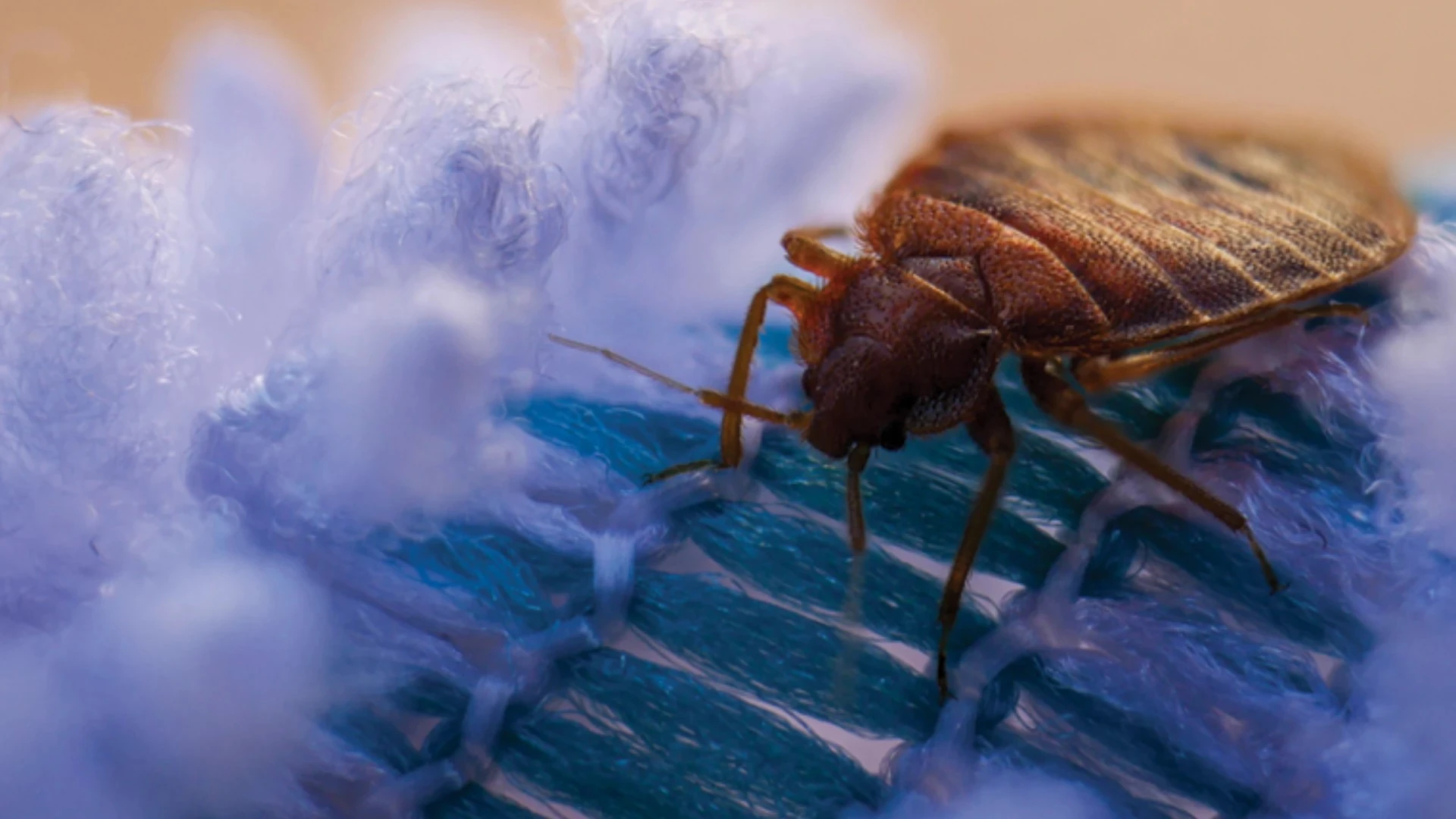It is safe to say that no other urban pests have elicited the degree of media hype and sensation as have bed bugs in recent years. Bed bugs have gone from a pest that was almost non-existent to one that is now of serious concern in all 50 states within a short period of time. To most people who experience them for the first time, bed bug infestations are simply intolerable. The economic losses and complaints associated with bed bugs continue to mount rapidly. As a result, the U.S. Department of Housing and Urban Development listed "support research to improve methods for preventing and combating bed bug infestations" as one of the long-term strategies of the Healthy Homes Strategic Plan (www.hud.gov/healthyhomes).
Despite the intense interest in curbing the global bed bug resurgence, there is comparatively little scientific knowledge about this tiny insidious pest, especially regarding its behavior and ecology. As all scientists who work in pest management realize such knowledge is critical in preventing and controlling bed bug infestations. Now, more than ever, it is crucial to study basic bed bug biology and behavior if we are to stem the epidemic resurgence of this difficult pest.
Multi-unit apartment buildings are more susceptible to rapid spread of bed bugs and chronic infestations than single homes. During 2006-09, we monitored an outbreak and development of a bed bug infestation in a high-rise apartment building in Indianapolis, Ind. What follows are our findings on bed bug infestation and dispersal patterns as determined through interviews, intercepting devices and visual inspections over a four-month intensive investigation.
METHODS. Here’s where we were and what we did:
Study site. The study site was a 15-story apartment building located in Indianapolis, Ind. The building has 223, one-bedroom apartments occupied by low-income elderly or disabled people. For several years, a local pest control contractor has used a variety of chemical pesticides including pyrethroids, chlorfenapyr, alcohol and diatomaceous earth in an effort to control bed bugs.
Survey of bed bug infestations. We obtained a list of apartments with reported/suspected bed bug infestations from the management office in December 2008. A visual inspection and resident interview (if residents were available) about the history of the infestation, past bed bug control efforts and resident awareness of bed bugs in their apartments was conducted. Inspections required approximately 20 to 30 minutes per team (or 0.7-1.5 person hours) during which all bed bugs found (except the egg stage) were physically removed with forceps.
Monitoring populations. Immediately after visual inspection in each of 64 infested apartments, CLIMBUP Insect Interceptors were installed. These were evaluated and cleaned every two to three weeks after installation for a maximum of 15 weeks (see Figure 1 below). The number of trapped bed bugs was identified by location in the Interceptor (inner well or outer well) and developmental stage (nymph or adult) was determined with the aid of a 10X hand-held magnifier.
After an apartment was confirmed as being infested with bed bugs, the two adjoining units and the two units immediately across the hallway from the infested unit were also inspected. If no bed bugs were found, the apartments were re-inspected one to three months later to confirm the absence of bed bugs.
Dispersal among apartments. We hypothesized that bed bugs frequently move to the entry door area of an apartment and from there disperse into adjacent apartments via the hallways. To test this hypothesis, we placed a pair of Interceptor traps in the hallways on either side of the entrance doors of five bed bug-infested apartments (see Figure 2 below). Because of aesthetic concerns from the management office, we removed the interceptors from the hallways seven days after installation. Interceptors were then placed inside the entry doors in eight infested apartments (see Figure 3 on page 96). We examined the interceptors every two to three weeks for 15 weeks.
RESULTS AND DISCUSSIONS. What follows is a review of what we found throughout the apartment building:
Bed bug infestations. Based on visual inspections, bed bug counts from interceptor traps, resident and staff interviews and records from the management office, 101 known apartments were determined to be bed bug infested as of April 2009 (within 41 months of the first confirmed infestation). This number represented 45 percent of the apartments in the building. Visual inspections revealed 53 active infestations, each with an average of 65 bed bugs. The very rapid increase and the persistence of infestations in the apartments verified that the existing pest control program was not adequate. It also became clear that more effective management strategies must be in place to prevent similar outbreaks in other multi-unit dwellings.
Residents in 40 apartments with previously reported bed bug infestations were interviewed to determine their level of awareness of bed bugs in their apartments. Among them, only 12 (30 percent) were aware of current bed bug activity in their apartments. Visual inspection alone in these 40 apartments revealed 24 active infestations. Thus, at least 50 percent of the interviewed residents did not know of an existing infestation even though they were living with it. The discrepancy between the numbers of reported (12) and actual (24) infestations suggests the necessity for inspection of all apartments in a building once any bed bug infestations are found.
We chose 20 bed bug-infested apartments to compare the effectiveness of visual inspections and interceptors. After hand removal of all the bed bugs found by visual inspections, the interceptors further detected bed bugs in 17 apartments. Mean visual count and interceptor count (12-week period) were 45 and 67, respectively. These results indicate that interceptors are an effective tool for monitoring bed bugs and evaluating the effectiveness of bed bug management programs. These results are consistent with previous findings in that visual inspections, even by highly skilled inspectors, missed large number of bed bugs.
Bed bug population structure. We examined a total of 1,540 trapped bed bugs and recorded their developmental stage and location within the interceptors. Among them, 78 percent were nymphs and 89 percent were found in the outer well of the trap. Location on the interceptor device is significant because finding more bed bugs in the outer well than in the inner well indicates that most of the bed bugs missed by visual inspections were not on the furniture but were elsewhere in the apartment (and were moving toward the furniture at the time they were caught).
Dispersal between apartments. Three out of the five pairs of interceptors placed in the hallways trapped two bed bugs per pair after one week, supporting our hypothesis that bed bugs used hallways as a route for dispersal. The mean visual count from these five apartments before placing the interceptors was 196 per apartment. The average number of bed bugs detected behind entry doors over the four-week period was six and the maximum was 42. Among the 138 bed bugs examined that were caught at entry doors (dispersing), 30 percent were nymphs, including first instars. The difference between the proportion of nymphs at entry doors vs. under furniture indicates that adult bed bugs were nine times more likely to disperse than nymphs.
The total number of bed bugs from interceptors placed at entry doors were positively correlated with the visual counts. Most of the neighboring apartments were either not infested or had much lower bed bug populations than the sampled apartments. We therefore considered the bed bugs trapped in the interceptors at entry doors as dispersing from, not moving into, the sampled apartments.
Interviews and further field observations revealed the following additional bed bug dispersal mechanisms: bringing in infested furniture, using an infested wheelchair in the building common areas, improper removal of infested furniture (e.g., not wrapping infested furniture in plastic prior to removal from the building), resident visits to infested apartments or common areas, and visits by guests unknowingly harboring bed bugs on their person, clothing or belongings.
MANAGEMENT IMPLICATIONS. So what should PMPs do when encountering bed bug infestations in apartment buildings? Here are some tips your firm should share with the building’s management.
1. Understanding the basic ecology and behavior of bed bugs can help direct management practices and will significantly impact success.
2. Property managers and pest management professionals must adopt building-wide bed bug monitoring and treatment programs. Simultaneous treatment will reduce bed bug dispersal and help achieve building-wide bed bug elimination.
3. More aggressive education of the clients and proactive monitoring are necessary to prevent new infestations, detect bed bug infestations in their early stage, and reduce the spread of bed bugs within and between communities.
4. Without changing current control practices, bed bug infestations may continue to spread in our society and likely will become much more widespread in low-income housing in the years to come.
Note: Complete study results were published in the Journal of Economic Entomology 103: 172-177.
Acknowledgements: The authors thank M. Aboul El-Nour for technical assistance, Indianapolis Housing Agency staff for providing access to the apartments, S. McKnight for providing study materials and John Obermeyer for providing photos.
Changlu Wang is with the Department of Entomology, Rutgers University, New Brunswick, N.J. Kurt Saltzmann, Eva Chin, Gary W. Bennett and Timothy Gibb are with the Center for Urban and Industrial Pest Management, Department of Entomology, Purdue University, West Lafayette, Ind. Wang can be reached at cwang@giemedia.com.

Explore the March 2010 Issue
Check out more from this issue and find your next story to read.
Latest from Pest Control Technology
- Rentokil Terminix Expanded in Key Markets with 2024 Acquisitions
- In Memoriam: Joe Cavender
- Certus Acquires Green Wave Pest Solutions
- Liphatech Adds Alex Blahnik to Technical Team
- Do the Right Sting: Stinging Insect Identification, Management, and Safety
- VAGA's 8th Annual Veterans Thanksgiving Appreciation Dinner
- Clark's Blair Smith on the Response to Increased Dengue Fever Cases in Southern California
- WSDA, USDA Announce Eradication of Northern Giant Hornet from U.S.





